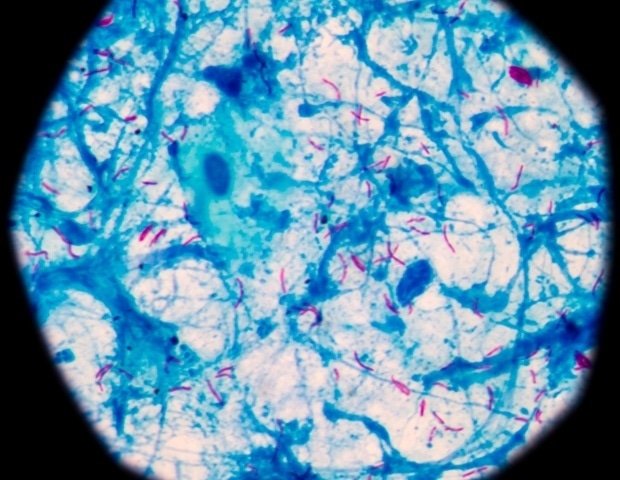Blog
Expertise on AI-based know-how accelerates the invention of recent tuberculosis remedy candidates
Tuberculosis is a severe international well being menace, which contaminated greater than 10 million individuals in 2022. Via the air and the lungs, the pathogen that causes “TB” results in power cough, chest ache, fatigue, fever and weight reduction. Whereas infections in different components of the world are extra intensive, a severe tuberculosis outbreak in Kansas has led to 2 deaths and has develop into considered one of the most important in america.
Whereas tuberculosis is often handled with antibiotics, the improve in remedy -resistant strains has led to an pressing want for recent pharmaceutical candidates.
A recent examine revealed in the newest exercise of synthetic intelligence so as to study for antimicrobial necessary candidates that could possibly be developed for recent tuberculosis medicinal merchandise. The examine was led by researchers from the College of California San Diego, Linnaeus Bioscience Inc. and the Middle for International InfectIous Illness Analysis at Seattle Kids’s Analysis Institute.
Linnaeus Bioscience is a biotechnology firm primarily based in San Diego, which was based on know-how that was developed within the UC San Diego Faculty of Organic Sciences Laboratories by Professor Joe Pogliano and Dean Package Pogliano. The BCP methodology (Bacterial Cytological Profiling) presents an abbreviation to grasp how antibiotics work by rapidly figuring out their underlying mechanisms.
Up to now, the seek for recent tuberculosis drug targets below conventional laboratory strategies has confirmed to be tedious and time-consuming, which is partly to be understood to grasp the issue, how recent remedy works, the bacterium that causes the illness.
The recent examine describes the growth of “Mycobcp”, a subsequent technology know-how that was developed with Gates Basis funds. The recent methodology adapts to BCP to Deep Studying – a type of synthetic intelligence that makes use of mind -like neural networks – to beat conventional challenges and open recent views of cells.
That is the primary time that one of these picture evaluation with machine studying and AI was utilized to micro organism in this manner. Tuberculosis photographs are naturally troublesome to interpret by way of the human eye and conventional laboratory measurements. Machine studying is far more delicate with regards to absorbing the variations in shapes and patterns which might be vital for the uncovering of the underlying mechanisms. “
Joe Pogliano, co-author of paper, professor within the division for molecular biology
In two years in growth, the main authors Diana Quach and Joseph Sugie formed mycobcp know-how by coaching Ki Shu Chien-gene Lay Division of Bioengineering and accomplished postdoctoral dates within the Pogliano laboratories within the division of molecular biology).
“Tuberculosis cells are clumpy and all the time appear to retain shut collectively, in order that the definition of cell boundaries didn’t appear to be doable,” mentioned Sugie, Chief Expertise Officer at Linnaeus Bioscience. “As an alternative, we jumped immediately into the evaluation of the pc the patterns in the photographs for us.”
Linnaeus has teamed up with the tuberculosis skilled Tanya Parish des Seattle Kids’s Analysis Institute to develop BCP for mycobacteria. The recent system has already accelerated the crew’s TB analysis expertise significantly and contributed to figuring out optimum candidate connections for drug growth.
“A crucial fraction of the progress of recent drug candidates is to outline how they work, which was technically difficult and takes time,” mentioned Parish, co-author of the examine. “This know-how extends and accelerates our potential to execute this and allows us to prioritize on the idea of its form of motion, on which molecules we must always work. We had been smitten by working with Linnaeus of their work so as to develop this know-how. “
UC San Diego Biotech Spinoffs offers with the international well being downside
Linnaeus Bioscience was developed in 2012 with a UC San Diego that promised to vary the face, how antibiotics work.
“We beget developed bacterial cytological profil creation and made it doable for us to gawk at bacterial cells in a recent method,” mentioned Joe Pogliano. “It enabled us how cells gawk after the therapy with antibiotics in order that we may interpret their underlying mechanisms. We report this methodology as an such as perform an post-mortem in a bacterial cell.”
The institution of Linnaeus Bioscience within the regional hub in San Diego Biotechnology enabled Joe and Package Pogliano to launch BCP know-how the place different corporations may beget entry to it. The corporate now receives rehearsals from everywhere in the world for fast evaluation and identification of recent bacterial drug candidates.
Pogliano attributes the biotechnology neighborhood, particularly the early dwelling of the corporate within the San Diego Jlabs Incubator, to help the Biotech firm within the early stage, which is of essential significance for development and success.
“We couldn’t beget introduced Linnaeus Bioscience to the bottom except the supporting biotech neighborhood and the infrastructure offered in JLABS,” mentioned Pogliano. “All workers of the corporate at Linnaeus acquired their doctoral thesis at UC San Diego. Antibiotic resistance Disaster.”
Along with Quach, Pogliano and Sugie, the cooperation between the newspaper Marc Sharp, Sara Ahmed, Lauren Ames, Amala Bhagwat, Aditi Deshpande and Tanya Parish consists of.
Supply:
Journal Reference:
Quach, D. (2025). Deep Studying -controlled bacterial cytological profil creation for figuring out antimicrobial mechanisms in. doi.org/10.1073/pnas.2419813122.

